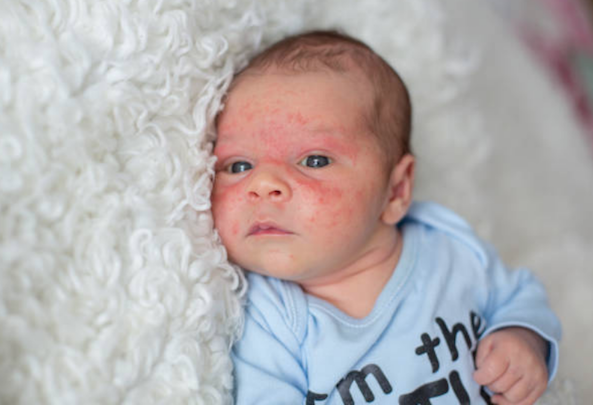Newborn baby acne (frequently referred to as “milk spots“) is a very common, but sometimes distressing, condition that often occurs in the early weeks of your newborn’s life. The medical term to describe this condition is “neonatal cephalic pustulosis” and the hallmark appearance is clusters of tiny pustules (white/yellowy bumps) usually appearing over the face/scalp.
The good news is that it is usually temporary and clears up on its own quickly!
Why do milk spots occur?
It is thought to be due to overgrowth of the yeast, Malassezia, which is a naturally occurring yeast, commonly present on normal skin and is not dangerous. It is the same yeast that causes other common skin disorders such as seborrhoeic dermatitis.
When do milk spots start?
Milk spots usually appear around the third week after birth.
Do milk spots affect boys and girls?
Yes. There is no significant difference between numbers of boys and girls affected by milk spots.
How long will it last?
Milk spots usually lasts up to a couple of weeks before clearing up on its own without any treatment.
Can I get treatment for milk spots?
If it is very severe, or goes on for a long time (more than a couple of weeks), then treatment is available in the form of a mild anti-fungal cream, which your GP can prescribe.
What else could it be?
True infantile acne (the same acne as teenagers/adults get) can also occur in young children from around 6 weeks old and present with a mixture of blackheads and whiteheads (comedones), pustules, nodules and cysts. This type of acne is more likely to be genetic (inherited component) and/or associated with elevated levels of hormones. It should be treated with prescription creams to reduce the risk of permanent scarring.
When should I see my doctor?
If you are worried your baby isn’t behaving or feeding as normal, or has a persistently raised temperature, then always seek a formal medical review from your GP or out of hours medical care.




Leave a Comment
You must be logged in to post a comment.